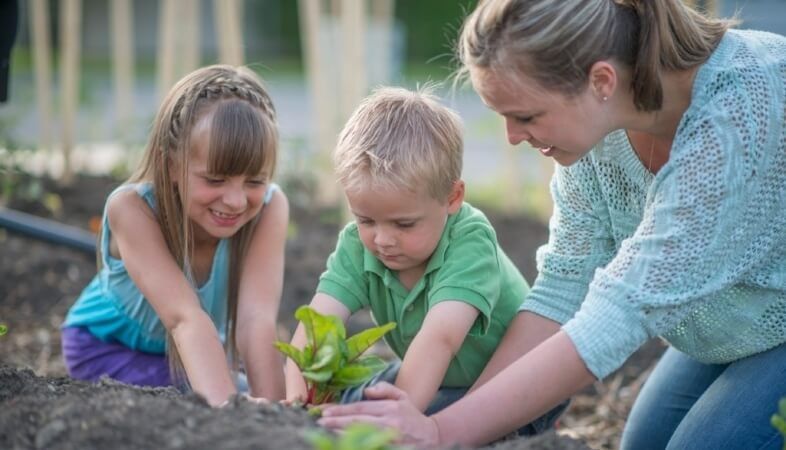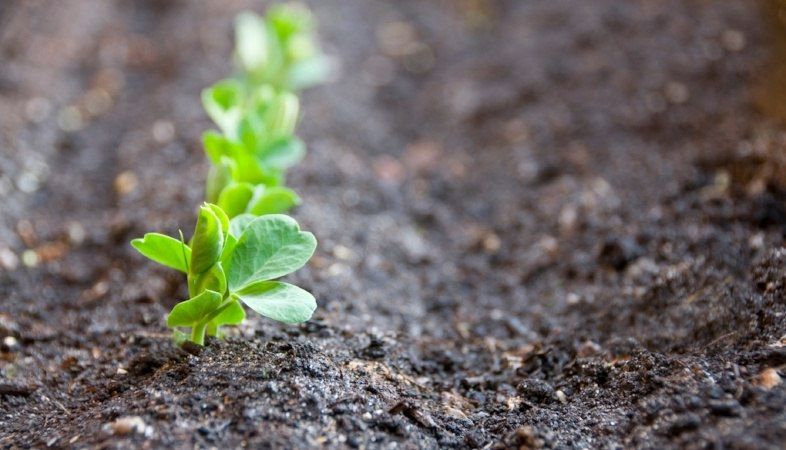Topics:
May 10th, 2017 | 2 min. read

A key component of overall wellness is a healthy diet full of fresh vegetables. A great way to incorporate those healthy foods into your diet is to grow them right in your own backyard.
In this guest post, Heather Veneziano, Children’s Garden Horticulturist at Lewis Ginter Botanical Gardens shares her tips for planting a successful spring garden. All you need is a little sunlight, soil, water and elbow grease to get started!For a successful garden, placement is perhaps most important. It’s not as critical that your garden spot be in full sunlight all day long, because there are plenty of vegetables that grow well in shadier spots. Ideally, your garden will be located in a place that you frequently walk past, so that you can remember to weed and water regularly.
If you just don’t have enough land for a garden plot, don’t worry. Many vegetables also grow well in containers, ideal for smaller spaces.
Healthy soil is a must for successful gardening. Check soil for clay and sand content. If soil contains too much of these, you can supplement your soil with compost for a better soil mix.
You may also consider raised bed gardening if your soil isn’t ideal for growing vegetables. Raised beds allow you to incorporate outside soil and compost, so that you’ve got exactly the right mix for growing.
Spring is an ideal time to plant all sorts of delicious herbs and vegetables. Since temperatures are no longer in the freezing range, the soil is warm enough for planting. Crops that love cool spring weather include lettuces, peas, kale, beets and carrots.
Some of these vegetables, such as most lettuces, have a very short maturation period, so you could begin harvesting them in as little as three to four weeks! Most others, including peas and carrots, will be ready to harvest in a couple of months, often by mid-May if you were to start in early April.

In April especially, the days are warmer and the nights are still cool, which lettuces and herbs like cilantro and parsley love. These plants also do well if your garden spot is in a shadier area.
Depending on the weather in your area, by early May you can begin planting summer fruits and vegetables, like tomatoes and cucumbers. By this time your early cool weather crops should be winding down their growing seasons; it is an ideal time to plant new crops.
Vegetables such as tomatoes, cucumbers and peppers are family favorites that everyone loves. Many flavorful herbs, like rosemary and sage, can actually be grown and enjoyed year round. These herbs, along with basil, parsley and mint are also great for small container gardening if your space is limited.
Make sure to grow the foods you like to eat. If you hate carrots, but love turnips, grow turnips instead. You’ll be more likely to care for your garden, and use your vegetables in healthy meals at home.
Aside from incorporating more fresh vegetables into your diet, growing your own garden has many other health benefits. While weeding may seem like a chore, it can actually be a good way to relieve everyday stress. Also, caring for your garden is a great backyard workout; you’ll get aerobic activity and strength training in as you water, weed and harvest vegetables!
A home vegetable garden is a terrific addition to an overall health and wellness plan. Now that the days are warmer, get outside and start planting. Before you know it, you’ll be enjoying fresh vegetables in every dish.
Topics: